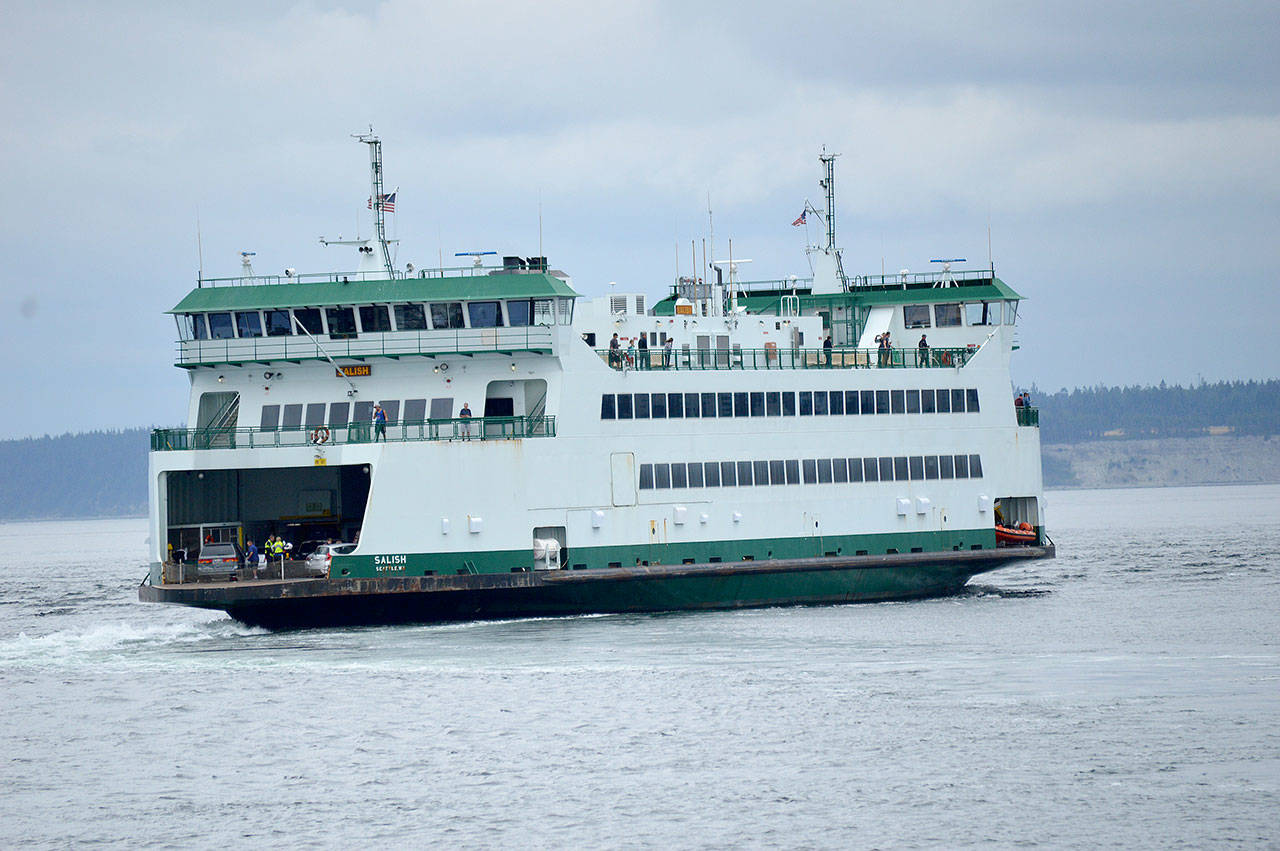Ferries and crab pots don’t mix, state officials warn.
The ferries on the run between the Coupeville dock and Port Townsend were entangled in crab pot lines three times in a 48-hour period this week, according to Ian Sterling, public affairs officer for Washington State Ferries.
It’s become a system-wide problem in the last couple of years — including the Clinton-to-Mukilteo run — but the worst has been the Coupeville-to-Port Townsend run. Sterling said he’s not sure if that’s because there are more inexperienced crabbers out there, more crabbers in general or if there’s another reason.
Ferry captains try to dodge the crab pots, but it’s not always possible, especially since the current can pull buoys underwater.
“It’s been described to me by ferry crews as a mine field,” he said.
It’s an expensive problem. Last year one of the boats on the Coupeville run, the Salish, was badly damaged after lines from crab pots were snarled in the propulsion system.
The Salish was out of service for weeks and had to be repaired in dry dock, which is very expensive, Sterling said.
“It was upwards of six figures,” he said.
Two other boats on two different runs had to be removed from service last year because of crab pot lines.
The problem can affect ferry service, which is bad for the tourism economy and the ferry system’s budget.
Wednesday, the crew of the Salish discovered a crab-pot line was wrapped around the propeller shaft. They checked the Kennewick and found it had the same thing. Then on Thursday they found that yet another line was snarling the Salish propeller.
In each case, a diver was able to respond quickly and fix the problem with “basically a kitchen knife,” Sterling said.
“The problem is you don’t always know if you’ve been hit by one of these things,” he said. “They’re below the waterline.”
It’s also salmon season, which means more recreational boats are on the water.
“Ferry captains have a lot to look out for this time of year,” Sterling said.
The state Department of Fish and Wildlife offers tips for avoiding run-ins between ferries and crab pots:
l Add weight to lines. Propellers can sever or wrap up a line floating along the surface. Use sinking lines when possible and add weight to keep floating lines off the surface.
l Know water depth. The easiest way to lose a pot is to drop one in water deeper than the length of line attached. Use a line that is one-third longer than the water depth to keep pots from floating away.
l Watch pots. Stay close to dropped crab pots to ensure all are accounted for at the end of the day.
l Add extra weights to crab pots. In many instances, adding just 10 pounds of weight can help recreational crab pots stay put.
l Use escape cord. Biodegradable cotton cord, which is required on all pots, will degrade and allow crabs to escape if a pot is lost.



